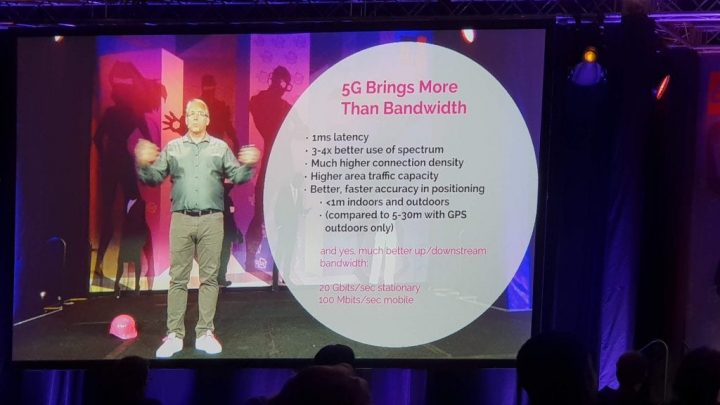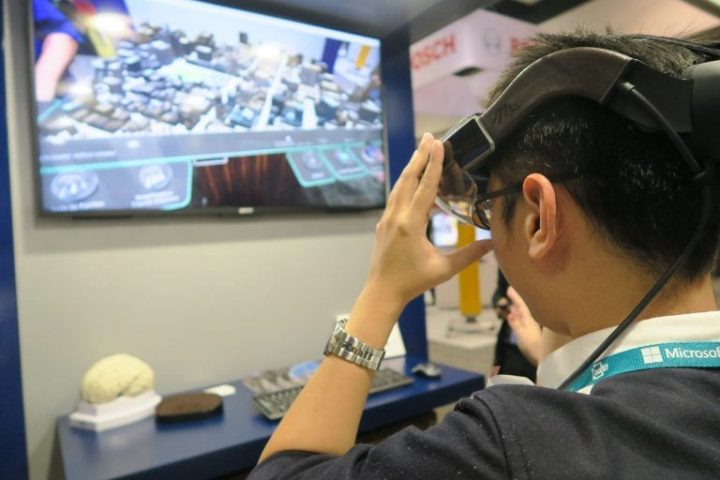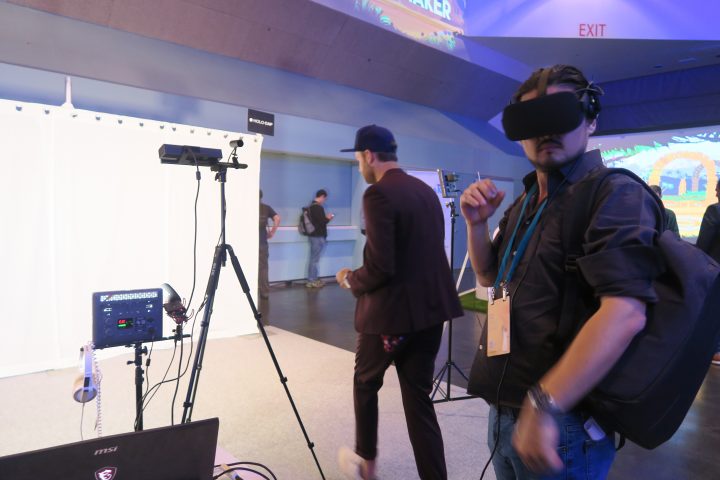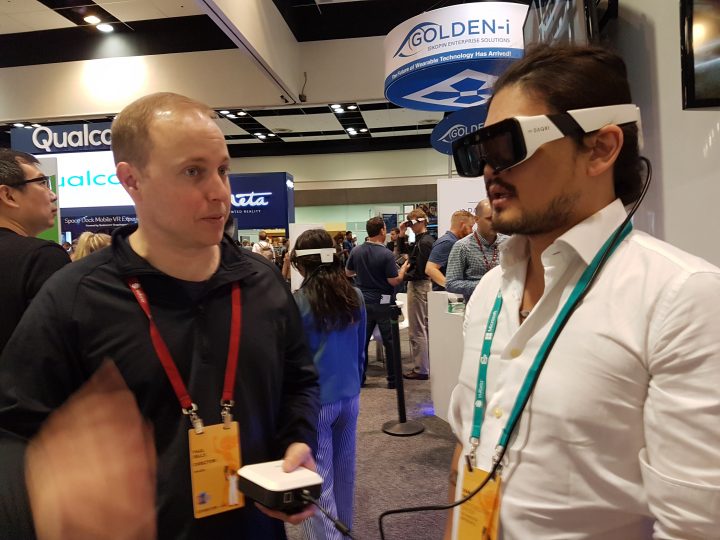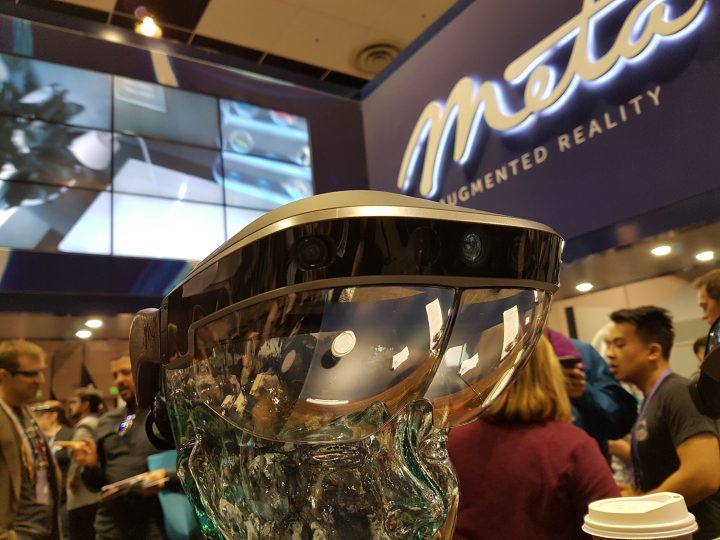AWE 2018 in a Nutshell
May 10, 2018
Dr Andrew Yew
Didn’t get the chance to tag along in the recent 9thAugmented World Expo (AWE 2018) in Santa Clara, USA? Don’t panic, because we were there to cover the much-coveted event, so that you didn’t have to.
The 9th Augmented World Expo was purely magical. This year sets a milestone in the Extended Reality (XR) industry (yes, the technology is now officially dubbed XR by the digital gods), where everything from Virtual Reality (VR), Augmented Reality (AR) and Mixed Reality (MR) are finally consolidated under one umbrella. XR is so much more than an industry; it’s a community with the same passion to push the envelope of revolution in digital technology.
AWE rockstar and Co-Founder Ori Inbar set the tone and the stakes with a brilliant call to action during his keynote speech – “Now is the time to go XR or go extinct”. It was a wakeup call to all sectors and enterprises to swim with the tsunami of change or be left to drown.
Meeting like-minded, passionate people and exchanging knowledge about XR and its exciting future.
In this article, we try our best to share the gist of essential highlights that echoed throughout the 3-day event. Who knows it might give you a valuable insight on what to expect in the next coming years of XR’s rapid evolution. So grab a cup of coffee, sit back and enjoy reading!
XR is The Future of Storytelling
Yes, there was a panel dedicated to XR storytelling at AWE; but the theme of telling stories came up again and again across all six tracks of the event, from tools to help creators tell stories in a new medium to lessons from Jason Katz, a Pixar veteran on how to structure a good story like your favorite Disney-Pixar film.
Jonathan Josephson of Quantum Interface and Angel Adams of Catchwind Innovations approached the topic from a design perspective, while others spoke about telling stories to entertain, teach ethical behavior, and raise awareness. Within storytelling, emotion and physicality (including new factors like body language and eye capture) were discussed: “You have a responsibility as a creator to understand the content you’re creating in an embodied experience,” said Ryan Horrigan (Felix & Paul Studios).
AR is the new frontier in storytelling and content creation. With the latest technology, AR can invoke content from almost any surface imaginable.
Audio Architect Patrick Flanagan shared THX’s innovative research on rendering 3D soundscapes in VR gaming and entertainment in Design. The afternoon Life and Work tracks featured Lowe’s Innovation Labs’ Mason Sheffield using digital storytelling and comic book writers to connect customers’ means with motivations. XR writer/producer Maggie Lane, Warner Bros.’ Greg Geqickey, and Chris Young from Nickelodeon talked about the future of entertainment in the XR era.
The future of entertainment looks very bright with XR technology. More content can be integrated into conventional media such as TV screen.
Shared Experiences
In the age of social media, it’s normal to find yourself in a subway car full of commuters with their heads down. Could XR technologies bring us closer together, make us more present, or let us feel others’ presence when far away? Can we create meaningful interactivity in XR?
It was made clear that AR is already enabling real-time, remote collaboration and design and that businesses are already seeing ROI. Elsewhere, speakers explored the possibilities of social VR (Katie Kelly, AltspaceVR) and reconnecting children with the physical world (Arjita Sethi, Equally). Phil Keslin of Niantic Labs stressed that AR is more than pixels–engaging geo-mapped AR experiences will make us socialize and explore our surroundings again. As for what’s next in AR, Mira’s Matt Stern said hands-free, social experiences.
6d.ai’s Matt Miesnieks assured us that the AR Cloud infrastructure will connect today’s disconnected AR apps and allow for sharing; and Ramesh Raskar from MIT Media Lab spoke about farmers using AR to train and interact with data to make better decisions.
5G is The Next O.G
With the increase in the available content and functions of AR services and applications, service providers and device manufacturers face significant technical challenges to efficiently track the location of a device while the device is moving to provide such augmented reality content. 5G will enable telcos to address these challenges and provide ARAAS or Augmented Reality As A Service.
The inauguration of 5G technology improves connectivity and elevates XR experiences that use location tracking.
ARAAS will require very high throughput, high data speeds, network-aided position tracking, and low latency compute offload to enable performant and scalable AR use cases that operate on the network. Whereas typically all the compute, position tracking and sensing for AR is local, 5G networks can offload many of these tasks, enabling lightweight battery efficient AR glasses and significantly enriching the user experience.
XR For a Good Cause
We may be in the Wild West era of XR – on an unclear path with infinite possibilities ahead – yet it does feel like we defined a few borders this year at AWE. XR is the next wave of computing, the next generation of the Internet, the future and a huge opportunity to improve lives, change attitudes, build equal representation, preserve the past, democratize knowledge, conquer our fears, and more. That we have a chance to do things right this time was a message evident throughout the agenda.
Some of the good XR could do in the world according to AWE 2018 speakers:
-
Help people with disabilities
-
Connect people emotionally to social causes
-
Comfort children post-op and encourage kids to learn
-
Fight hate and save the honey bee
The last speaker of AWE, 14-year-old entrepreneur Sabarish Gnanamoorthy, spoke about how XR will impact his generation, what tech providers are getting wrong, and how we should be approaching the future of XR.
Truth be told, we owe it to them to translate the incredible potential of XR into viable solutions for a better world.
Real Talk
This year’s presenters made many powerful statements and observations, beginning with Ori Inbar’s declaration that “Now is the time to go XR or go extinct.” A main-stage panel on diversity in XR, discussions within the XR4Good Track, and talks curated by WXR asked us to own up to the failure of the tech industry to mentor women and people of color, and to consider diversity from the ground up (from code to leadership).
Walmart’s Steven Lewis talked about creating the killer app in AR to bring together e-commerce and brick and mortar shopping; and Paul Davies of Boeing and Heidi Buck, Director of the US Navy’s Mixed Reality Lab, gave a look inside how both are leveraging AR to solve problems of complexity and danger.
Mike Campbell shared the latest efforts by PTC and Vuforia to make AR easier and more scalable for businesses.
Qualcomm’s Hugo Swart talked about building an ambient world and the possible convergence of XR devices in the next 10 years. He said, “XR is the future of mobile computing. It’s going to change the way we work. It’s going to change the way we play. It’s going to change the way we socialize. The question is: How are we going to get there?”. Now that’s a point to ponder.
Other informative panels across the six tracks included one on building the AR Cloud; and one on haptics to feel virtual worlds with Gijs den Butter (Sense Glove), Joe Michaels (HaptX), Di Dang (Google), Adrienne Hunter (OSSO VR), and Tom Carter (Ultrahaptics).
Expo and Playground
A plethora of startups, studios, corporations displayed their products to eager attendees – be it hardware, software tools or applications. We spent fruitful sessions with various XR industry players, exchanging views and sharing knowledge about the exciting technology.
A vast range of VR headsets were exhibited at the expo.
We were given the opportunity to check out various booths showcasing many different types of digital eyewear, development and content creation tools and interaction devices. Popular booths include Vuforia, Meta2, Qualcomm, and Microsoft HoloLens.
Attendees also had the chance to drop by the Playground where they could play large room-scale AR/VR games and experiences with a variety of input and output devices.
VR has been at the frontier of gamification industry for quite a while, but is that going to change with the induction of XR as an integrated source for gaming?
Auggie Awards
The annual Auggie Awards have been the most recognized XR awards in the world since 2010. Now in its 9th year, the Auggies continue to showcase the best-of-the-best in XR. Here are some of the key categories and winners:
-
Best Developer Tool: UNITY
-
Best Consumer App: IKEA Place by IKEA
-
Best Game: Lenovo’s Star Wars: Jedi Challenge
-
Best Headworn Device: HTC Vive Pro
-
Best Campaign: Acura AR Race
The highlight of the awards, The Nextant Prize, was awarded to influential leaders who rely on compassion and humanitarianism to guide their contributions to virtual, augmented, mixed reality and society. Or as Tom Furness, founder of Virtual World Society dubbed it: “the Nobel Prize of XR”. This year’s winners are Microsoft Research’s Partner Director of Program Management, Mark Bolasand prominent immersive journalistic figure Nonny de la Peña.
The Nextant Prize winner congratulated by AWE heavyweights Ori Inbar and Tom Furness.
So there it is – so much knowledge, so many priceless gems gathered during the memorable AWE 2018, and we hope the next AWE will be another great adventure for The Ministry Experience team. Till next year!






